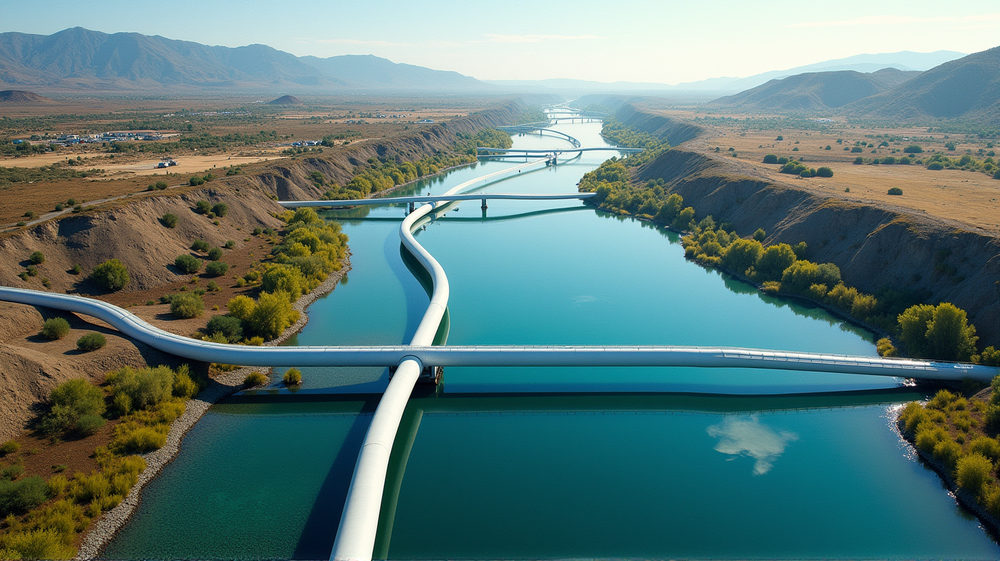The Delta Tunnel Debate: Economics of California’s Water Lifeline
Water. It’s the lifeblood and the ongoing challenge for the Golden State. One name rises amid the debate: The Delta Conveyance Project, a colossal 45-mile tunnel snaking beneath the Sacramento River’s fragile delta ecosystem. But is this ambitious project set to outperform its weighty expectations, or will it remain a vain dream of Californian abundance?
A Project of Proportions
In a world thirsty for sustainable solutions, the Delta Conveyance stands as a potential masterpiece. Imagine a fluid artery pulsing 4 million acre-feet of water each year. But let’s not suspend our disbelief just yet. Current estimates predict a mere 500,000 acre feet annually—a drop in this grand ocean of plans.
The economics of the project paint a daunting picture. A staggering \(20 billion investment is required at best, forecasting an eyebrow-raising cost/yield ratio of \)5,000 per acre foot. The excitement simmers over alternatives like raising the Shasta Dam. Enhancements there could provide 200,000 acre feet/year, superior at a sweeter $10,000 per acre foot in returns.
The Economic Gamble
The intriguing juxtaposition of cost against yield continues with Sites Reservoir’s promising 500,000 acre feet at \(10,000 per acre foot. But half reserved strictly for environmental havens. As we circle back, the Delta Tunnel stands stark, threatened by the real-world unpredictability of cost overruns. Picture a ballooning \)40 billion cost ending with an unimaginable $80,000 per acre foot.
Dig deeper, and the tides of economic wisdom swirl. Double that projected throughput, make optimistic cost approximations, and the best-case scenario teeters towards $30,000 per acre foot—yet still pricier than the coastal allure of desalination.
The Imminent Infrastructure
Critiquing the tunnel’s sole focus on water movement is narrow, for its real marvel is a diversified lifeline—the guardian against cataclysmic breaches and saltwater invasions into the delta’s heartland. A beacon before a fragile archipelago of levees, the tunnel could safeguard 25 million urban souls and lush, irrigated expanses if calamity came knocking.
Still, time’s relentless shadow encases the debate; urgency in shores unfortified and aquifers still untapped sits overshadowed. Californians can hardly afford to wait till 2040 for the concrete vision to emerge. New reservoirs, advanced desalination projects, and the rejuvenation of wastewater must flourish now, not then.
Toward a Future of Abundance
As articulated by Edward Ring, co-founder of the California Policy Center, we need an abundance mindset for progress. The fiery winds of change must be harnessed by policies leaning towards unity, enhancing both energy and water supplies for a future drenched in prosperity.
From the author of “The Abundance Choice: Our Fight for More Water in California,” the message is clear—every moment counts. As California navigates its existential battle with water, the conversations must not just include the Delta Conveyance but every potential opportunity for nurturing its verdant horizon. Can this tunnel guide us there? Perhaps. But, just perhaps, it’s a step on a much wider pathway.
According to Maven's Notebook, the Delta Conveyance Project intricately ties California’s future prospects with economic and ecological balance. It remains a debate not solely about a tunnel but about hope and resilience in the face of Mother Nature’s trials.




